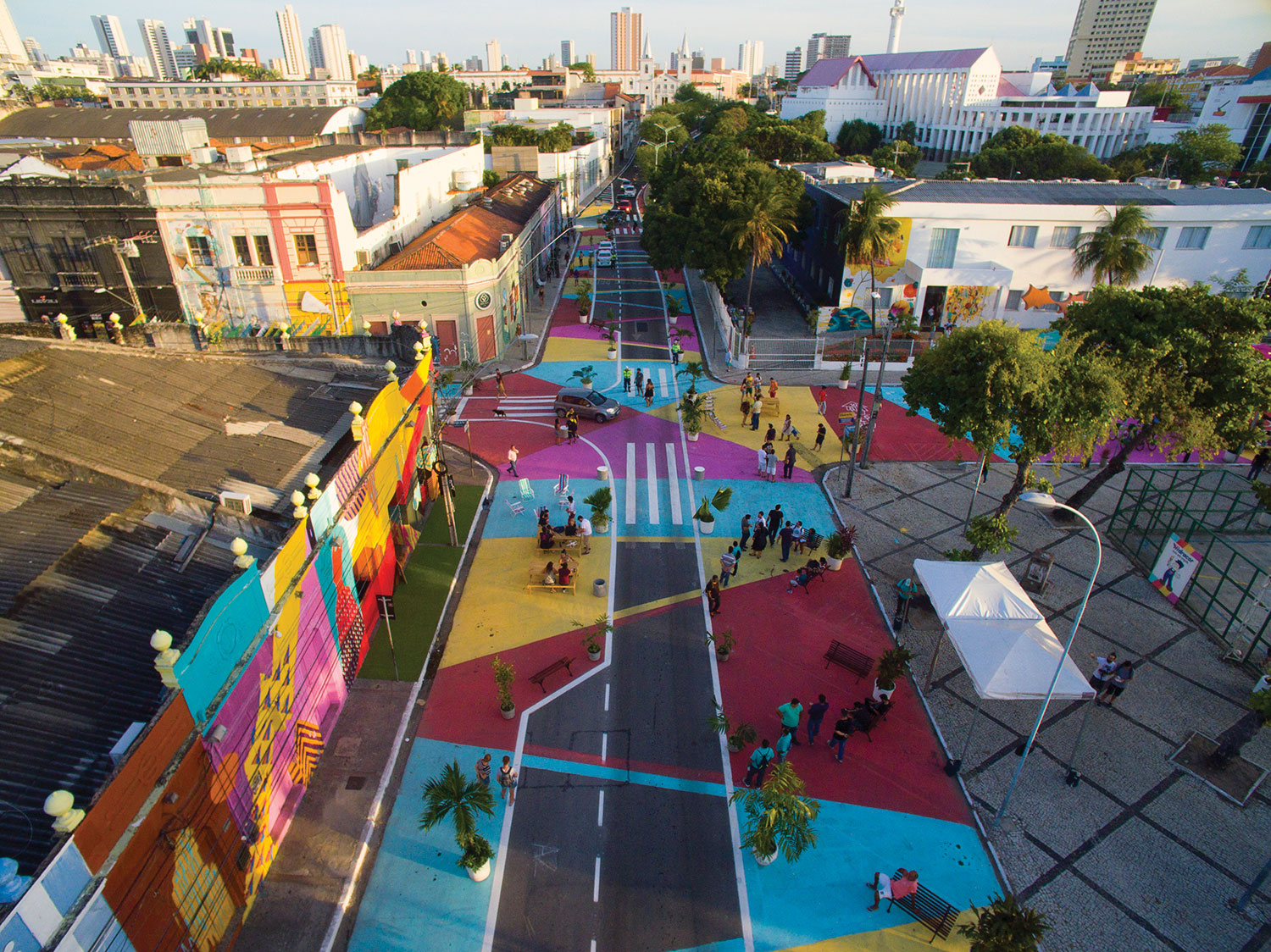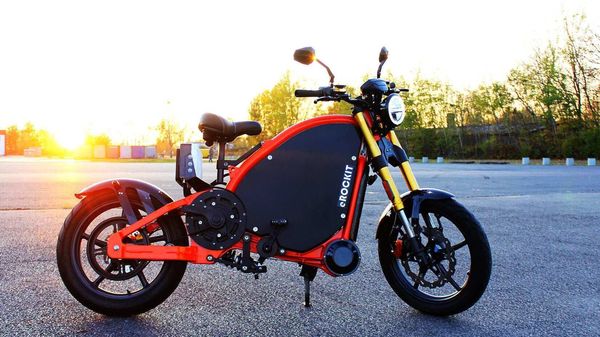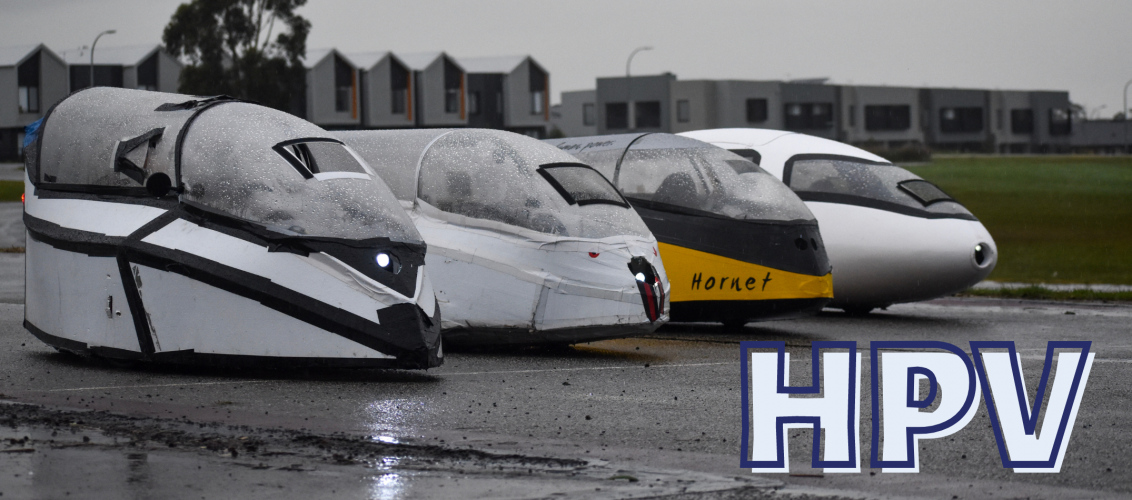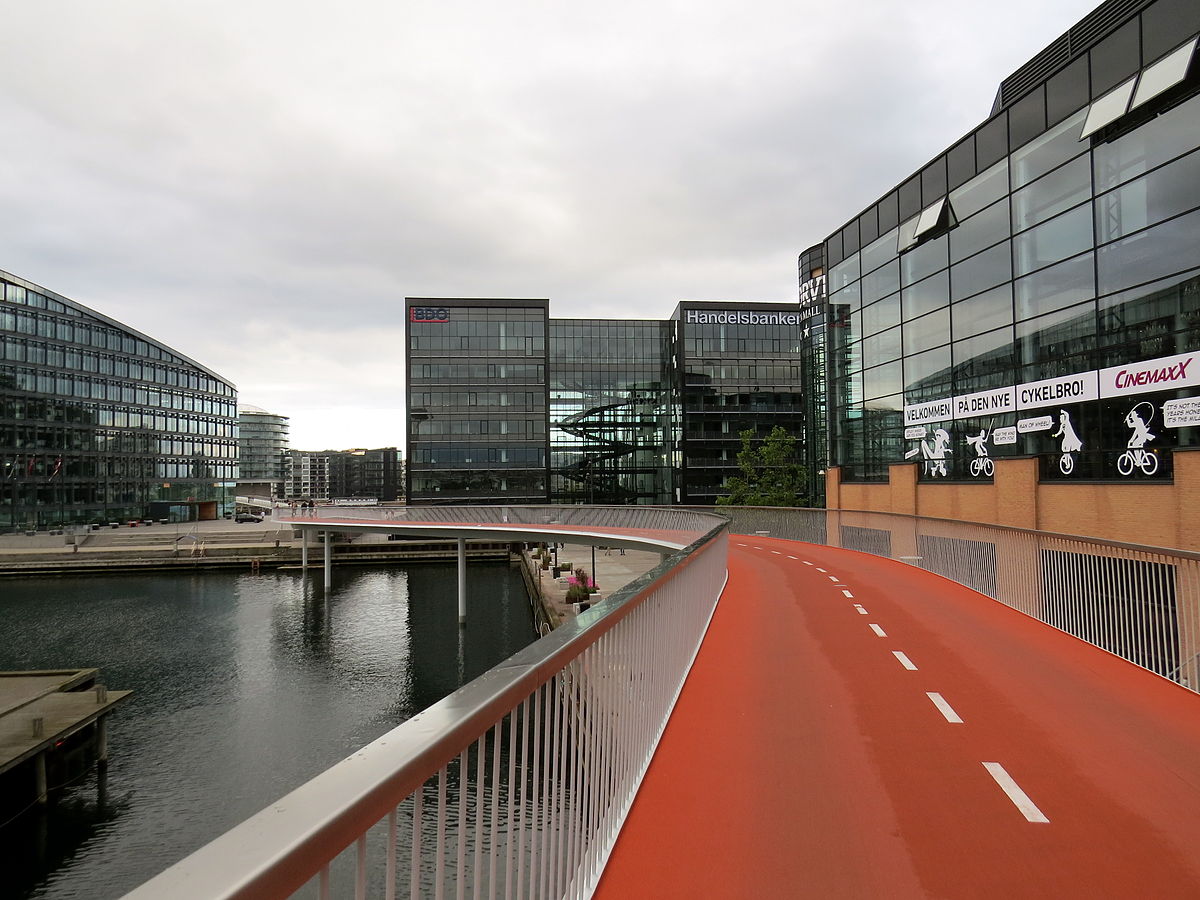User Ideas / Prospects
Cities leading the way in human-powered vehicle (HPV) infrastructure and the sustainable transformations they’re making to incorporate bicycles and other HPVs into urban planning. This includes their specific initiatives, benefits, and challenges:
1. Copenhagen, Denmark
Copenhagen is often cited as the gold standard for bike-friendly cities. With over 385 kilometers of dedicated bike lanes and iconic infrastructure such as the "Cycle Snake" bridge, the city has invested heavily in making cycling safe and accessible. Since 2014, cycle traffic has increased by 80%, with approximately 20,700 daily crossings on the Cycle Snake alone. This infrastructure provides clear lanes separated from car traffic and integrates innovative elements like curb-separated cycle tracks, bike-priority traffic lights, and set-back stop lines that increase safety at intersections. Copenhagen aims to achieve a 50% cycling modal share for trips to work or education by 2025, bolstered by over €10 million allocated in 2022 alone for new cycling projects
Visit CopenhagenState of GreenVisitDenmark- Infrastructure: Copenhagen is known for its comprehensive bike infrastructure, with dedicated bike lanes, innovative bike bridges, and a focus on bike-first urban planning. Approximately 62% of residents commute by bike, supported by city policies aimed at reducing car traffic and promoting cycling as a primary mode of transportation.
- Benefits: Copenhagen’s investment in HPV infrastructure contributes to reduced air pollution, improved public health, and decreased traffic congestion. The city’s emphasis on cycling has helped make it one of the cleanest and most active cities globally.
- Challenges: Even with its impressive cycling infrastructure, Copenhagen faces challenges in managing high cyclist volumes and maintaining the infrastructure during cold winters. However, ongoing innovations, like heated bike lanes, aim to address this issue
2. Bogotá, ColombiaIn Bogotá, cycling is integrated into the city’s congestion management and environmental strategies. The Ciclovía program is a notable example: every Sunday, major streets are closed to cars, allowing thousands of cyclists and pedestrians exclusive use of around 120 kilometers of roadways. This initiative encourages cycling while reducing vehicular emissions on high-traffic days. Bogotá has also added permanent bike lanes to support everyday commuting, which has helped the city reduce traffic congestion and air pollution, while promoting a healthy lifestyle among residentsWorld Resources InstituteArchDaily
- Infrastructure: Bogotá has transformed its streets with dedicated bike lanes and the Ciclovía program, where cars are banned on certain roads every Sunday, allowing cyclists and pedestrians exclusive use. This initiative spans about 120 kilometers of roadways.
- Benefits: These efforts significantly reduce traffic congestion, cut down emissions, and provide residents with a safe, open space for recreation and commuting. The program is a model for other cities worldwide looking to promote sustainable and active transportation.
- Challenges: While the Ciclovía program is popular, Bogotá still needs more year-round dedicated bike lanes to encourage daily HPV commuting. The city is also working on addressing safety concerns and infrastructure maintenance to support its growing cyclist populationWorld Resources Institute.

Utrecht has embraced cycling with a robust approach to multimodal commuting, connecting bike infrastructure directly with public transit. It is home to the world's largest bike parking facility, which accommodates over 22,000 bikes, facilitating easy transitions between cycling and train travel. Utrecht has committed to doubling bike commuting by 2030 and expanding its network of "cycle superhighways" to support long-distance cycling, which reduces car dependency and lowers emissions. The city’s emphasis on convenience and connectivity has made cycling a primary mode of transport
ArchDailyVisit Copenhagen- Infrastructure: Utrecht has invested heavily in bike infrastructure, including the world’s largest bike parking facility, with over 22,000 spaces. The city integrates bike paths seamlessly with public transit stations, facilitating multi-modal commuting and reducing car dependency.
- Benefits: Utrecht’s emphasis on cycling infrastructure has led to a reduction in car use and associated pollution, as well as economic benefits from fewer infrastructure maintenance requirements compared to car-dependent cities. The facility serves as a central hub that improves the commute experience for cyclists, with easy access to amenities.
- Challenges: The demand for bike facilities continues to grow as cycling becomes even more popular, and the city is challenged with ensuring sufficient space and integration with other forms of public transport to keep up with the increasing usageArchDaily.

Fortaleza demonstrates how cities in emerging economies can prioritize cycling infrastructure. The city has funded its cycling projects through creative revenue sources, such as online parking fees, which financed a 524-kilometer expansion of its bike network. Fortaleza’s strategic bike lanes have made cycling safer and more accessible, helping reduce congestion and providing an affordable commuting alternative. This infrastructure boost increased the city’s cycling rate, showing that even in car-centric urban areas, bike-friendly infrastructure can change commuting patterns
World Resources InstituteC40 Knowledge Hub- Infrastructure: Fortaleza’s innovative approach to cycling infrastructure includes a strategic plan that expanded its bike lane network by 524 kilometers. The city funded this expansion through revenue generated from an online parking app, demonstrating a creative approach to financing.
- Benefits: Fortaleza’s bike lane expansion has helped make cycling safer and more appealing, significantly increasing the number of daily cyclists. The infrastructure has also contributed to a decrease in traffic congestion and vehicular pollution, benefiting the overall urban environment.
- Challenges: As a rapidly growing city, Fortaleza must balance infrastructure needs across various transport modes. Ensuring consistent maintenance and safety on its bike paths and addressing funding limitations remain key challenges as the city seeks to make cycling a primary mode of transportationWorld Resources Institute.

Montreal is North America’s leader in cycling infrastructure, with over 500 kilometers of bike paths and numerous protected lanes. The city integrates bike paths with its public transit system and operates one of the top-rated bike-sharing programs in the world. Montreal’s seasonal challenges are addressed through snow removal on key bike paths, ensuring year-round cycling access. The emphasis on safe and interconnected bike routes not only supports Montreal’s sustainability goals but also attracts cycling tourism, providing economic benefits as well
ArchDailyVisitDenmark- Infrastructure: Montreal is considered a leader in North America for its extensive bike infrastructure, which includes protected bike lanes and intersections specifically designed for cyclists. The city has also implemented bike-sharing programs to promote HPV use.
- Benefits: The increased accessibility and safety of bike infrastructure in Montreal have encouraged more residents to cycle, leading to reduced traffic congestion and emissions. The emphasis on cycling also supports a healthier lifestyle for residents and has boosted local tourism by making the city more accessible for visitors.
- Challenges: Montreal’s cold winters pose a challenge to year-round cycling. The city is exploring options for winter maintenance of bike paths, as well as other improvements to encourage all-season cycling, as cycling infrastructure investments are critical for reducing car use over timeArchDaily.
These cities showcase diverse strategies and highlight the profound impact HPV infrastructure can have on urban environments. Investment in cycling lanes, dedicated paths, bike parking, and multi-modal commuting options are essential steps for integrating HPVs into urban landscapes. Cities that prioritize HPVs benefit from reduced pollution, improved public health, and less congestion. However, seasonal challenges, safety concerns, and the need for ongoing funding remain as areas to address.
These examples demonstrate that with creative approaches to funding, thoughtful planning, and policy support, cities worldwide can create a future where human-powered transportation plays a central role.

future prospects of human-powered vehicles, particularly focusing on new materials and designs, electric-assist technology, urban infrastructure improvements, and the environmental and economic impact of these developments. I'll also highlight some promising concepts currently in testing and development.
1. Electric-Assist Technology and Hybrid HPVs- Pedal-Assist Systems: These systems integrate a small electric motor that activates as the rider pedals, providing a boost. This approach allows for longer commutes and easier uphill rides, making human-powered transport more feasible in hilly cities and for less physically intensive travel.
- Hybrid Velomobiles: Hybrid velomobiles combine the aerodynamic efficiency of enclosed human-powered vehicles with electric-assist features. Designed to reach higher speeds with less exertion, they are especially practical for all-weather, year-round commuting.
- Battery Advancements: Lightweight, longer-lasting batteries are essential to making these hybrid systems viable. Developments in lithium-ion and, more recently, solid-state batteries could enhance the range and lifespan of electric-assist HPVs.

- Lightweight and Durable Materials: Modern materials like carbon fiber, Kevlar, and titanium make HPVs lighter, faster, and more robust. Carbon fiber is especially popular for high-end bicycles and velomobiles due to its high strength-to-weight ratio, though the cost remains a barrier for some applications.
- Streamlined Designs: Aerodynamic innovation has allowed for the creation of streamlined shapes that reduce air resistance, significantly increasing potential speeds. This is especially beneficial for velomobiles and recumbent bikes used in racing and endurance events.
- Sustainable Materials: Some designers are experimenting with sustainable materials, such as bamboo, for frames and components. Bamboo bikes are not only strong and lightweight but also eco-friendly and affordable, with a lower production impact than metal frames.
- Dedicated HPV Lanes: Many cities are building dedicated bike lanes or multi-use paths to accommodate HPVs. These lanes separate human-powered vehicles from motorized traffic, increasing safety and encouraging more residents to use HPVs.
- Bike-Share Programs: Bike-sharing systems, such as Citi Bike in New York or Vélib' in Paris, are expanding their offerings to include electric-assist bikes and cargo bikes. This makes HPVs accessible to more people and provides affordable options for short-distance trips.
- Policy Support: Cities and states are introducing incentives such as tax credits, subsidies, or grants to encourage the purchase of HPVs and electric-assist models. Programs aimed at reducing carbon footprints and promoting green transit often include provisions for HPVs.
- Carbon Emissions Reduction: With zero tailpipe emissions, HPVs can drastically reduce transportation’s impact on air quality and carbon emissions. They are also quieter, which can help reduce noise pollution, improving overall quality of life in urban environments.
- Affordable Mobility: Human-powered vehicles offer a cost-effective alternative to motorized vehicles. With lower operational and maintenance costs and no need for fuel, HPVs provide accessible transportation, especially in areas where car ownership might be economically challenging.
- Health Cost Savings: HPVs promote a more active lifestyle, which can reduce healthcare costs related to lifestyle diseases, such as obesity, diabetes, and cardiovascular issues. Cities that promote cycling and other human-powered transport modes often see significant public health benefits.
- Human-Powered Trains and Rails: There are concepts of small, pedal-powered rail vehicles that could be used on abandoned tracks or dedicated rail paths. These vehicles combine the efficiency of rail with human-powered mobility, potentially transforming unused rail networks into eco-friendly transit routes.
- Flying HPVs: Human-powered aircraft like the Daedalus and Gossamer Condor have demonstrated that sustained, albeit limited, flight is possible using human power. Future designs might integrate lightweight electric assistance, enabling short-range, eco-friendly flights.
- HPVs for Cargo and Freight: Innovations in cargo bikes and trikes are enabling the transport of goods in urban settings. With electric-assist options, these vehicles are helping to reduce delivery emissions in city centers and are especially promising for last-mile deliveries, where traditional trucks struggle with congestion.
- Infrastructure Gaps: While cities are improving HPV infrastructure, many places still lack sufficient lanes, storage, and repair facilities for bikes and similar vehicles.
- Affordability of Advanced HPVs: High-end HPVs with electric-assist and advanced materials can be cost-prohibitive, limiting access. As technology improves and demand grows, prices may decrease, but initial costs remain a challenge.
- Weather-Resistant Designs: Velomobiles offer a partial solution, but additional innovation in weatherproofing may be needed for widespread adoption, especially in areas with extreme climates.
The future of human-powered vehicles looks promising, particularly as technology, design, and urban infrastructure evolve. By combining human energy with advanced engineering and sustainable practices, HPVs could play a pivotal role in shaping an eco-friendly, health-conscious, and cost-effective transportation landscape. Whether for urban commutes, recreational activities, or even short-haul logistics, HPVs stand as a powerful tool in our transition toward greener and more sustainable cities.

